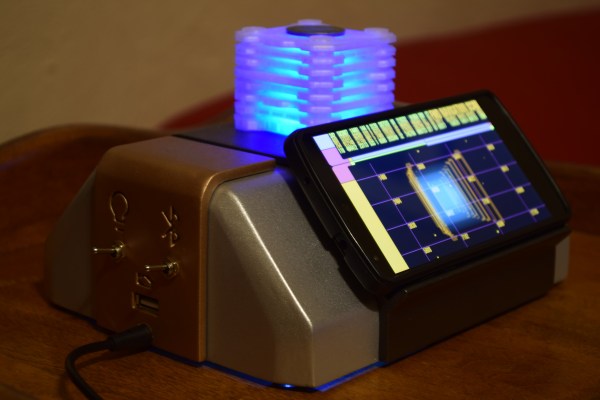Star Trek is often credited with helping spur the development of technologies we have today — the go-to example being cell phones. When a Star Trek April Fool’s product inspires a maker to build the real thing? Well, that seems par for the course. [MS3FGX] decided to make it so. The 3D printed Star Trek-themed phone dock acts as a Bluetooth speaker and white noise generator. The result is shown off in the video below and equals the special effects you expect to find on the silver screen.
Taking a few liberties from the product it’s based on — which was much larger and had embedded screens — makes [MS3FGX]’s version a little more practical. Two industrial toggle switches control a tech cube nightlight and the internal Bluetooth speaker. An NFC tag behind the phone dock launches the pre-installed LCARS UI app and turns on the phone’s Bluetooth. Despite being a challenge for [MS3FGX] to design, the end product seems to work exactly as intended.
Continue reading “Star Trek Phone Dock Might As Well Be From Picard’s Night Stand”




 [Andy] loves his
[Andy] loves his  If you’re going to build a jukebox, why not go all out? Here’s a
If you’re going to build a jukebox, why not go all out? Here’s a 













